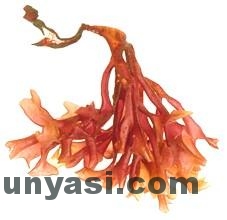

Carrageenan: A Versatile Molecule in Molecular Gastronomy and Food Industry
Introduction: Carrageenan, a multifaceted gelling molecule derived from diverse species of red algae, plays a pivotal role in molecular gastronomy, offering a wide array of applications, from basic thickening to robust gelling textures in both hot and cold dishes.
Origin: Sourced from red algae extract, carrageenan stands as a natural polymer fiber renowned for its flexibility and strength. Enriched with carbohydrates and essential potassium and calcium ions, it holds the key to its distinctive gelling properties.
The term “carrageenan” finds its roots in the Celtic word “carraigín,” translating to seaweed. Historical records of carrageenan usage date back to 1810 in Ireland, where prescriptions for respiratory issues featured this ingredient. The migration of the Irish population in the 18th and 19th centuries brought carrageenan to New England, marking significant industrial growth, particularly during World War II.
Today, carrageenan has evolved into the most widely produced solid seaweed extract globally, significantly contributing to the cultivation of algae species like Eucheuma denticulatum and Kappaphycus alvarezii.
Properties: Distinguished by unique properties and chemical structures, carrageenan manifests in various types. Commonly employed commercial variations, known as iota, kappa, and lambda carrageenans, are tailored blends responding to specific molecular gastronomy needs.
- Iota Carrageenan: Exhibiting flexibility and elasticity in the presence of calcium, iota carrageenan forms transparent and temperature-resistant gels. Its dissolution requires a temperature exceeding 60°C.
- Kappa Carrageenan: Known for producing firm and elastic gels in the presence of potassium ions, kappa carrageenan creates rigid and brittle gels with calcium. Like iota carrageenan, it necessitates a temperature surpassing 60°C for dissolution.
- Lambda Carrageenan: Primarily utilized to augment viscosity, lambda carrageenan lacks gel-forming properties.
Industrial Applications: The vast majority of carrageenan production finds its place in the food industry, particularly as a stabilizing agent in dairy product manufacturing. It plays a crucial role in preventing protein separation in products such as strained cheese and ice cream, ensuring uniformity. In chocolate milk, it suspends cocoa particles.
Carrageenan’s moisture retention attributes make it a valuable component in processed meat products, addressing dryness concerns stemming from the absence of fat in healthier food alternatives.
Creative Culinary Uses: Carrageenan’s versatility shines through in culinary applications, offering a spectrum of gels suitable for both hot and cold servings, ranging from soft to firm and elastic to brittle.
Healthy Kitchen Applications: In the realm of healthy kitchen endeavors, carrageenan proves its worth by enabling the creation of flan cream without the need for eggs. Its diverse combinations can serve as an effective substitute for animal gelatin.
Tips and Tricks: To facilitate carrageenan’s dissolution, utilizing a hand blender is recommended. Alternatively, a whisk can be employed, adding carrageenan gradually to the liquid to prevent clumping. Given its low solubility in water, a practical approach involves first dissolving carrageenan in boiling water before introducing it to the final solution.